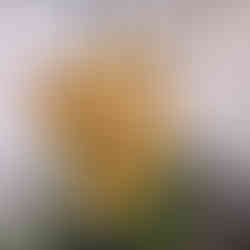Kintsugi Repair Archive: The Amazon and the Troll
- Eva Lenz-Collier

- Aug 25
- 2 min read
In the early days of my kintsugi career, it was mainly friends and acquaintances whose broken favorite pieces ended up in my workshop. In addition to vases, bowls, and cups, there were also two sculptures, which I greatly enjoyed repairing.

The Amazon
The owner of this piece is a very old friend of mine. Her partner is a freelance photographer with whom I have worked on several projects during my 20-year career as a graphic designer. The owner is as combative as the warrior on horseback, so it was all the more painful when the photographer dropped the precious piece.
The shards were picked up in the hope of being able to repair it at some point – even though a few of them were lost.
When I started my own kintsugi studio, the photographer was my first port of call for a professional photo shoot, and we agreed that in return I would restore the Amazon to its former glory.
Working on such a piece, which has not only emotional value but also special symbolism, was a particular pleasure for me, and the owner, who had already given up hope of it ever being repaired, is still very happy today.
Trolli
When the mother of a good friend called me and said, “My daughter-in-law said you might be able to take care of Trolli,” I didn't know at first what she was talking about. It also took a while to realize that “Trolli” was a ceramic sculpture depicting a troll—well-known figures in Norse mythology who live in nature and bring both good and bad fortune to humans. Trolli, I was assured, was benign and belonged to my friend's family.
The sculpture, which also served as a candlestick, is about 100 years old and belongs to the family, some of whom originate from Sweden. That is also where Trolli has its origins: its form combines Art Nouveau styles with picturesque depictions of beloved nature spirits. During World War II, the figure was damaged in bombing raids and lovingly repaired with plaster by an uncle in the 1960s.
The work on Trolli took a very long time, as I first had to undo the repairs. Fortunately, the plaster came off easily, and then began the long process of kintsugi repair, in which larger parts also had to be replaced with filler. The family chose brass as the finishing material, which would tarnish over time—the patina that will form over time matches the natural growth of the beloved house troll.
If you have your own items that you would like to have repaired, you will find a contact form in the “Repair” section.





































Comments